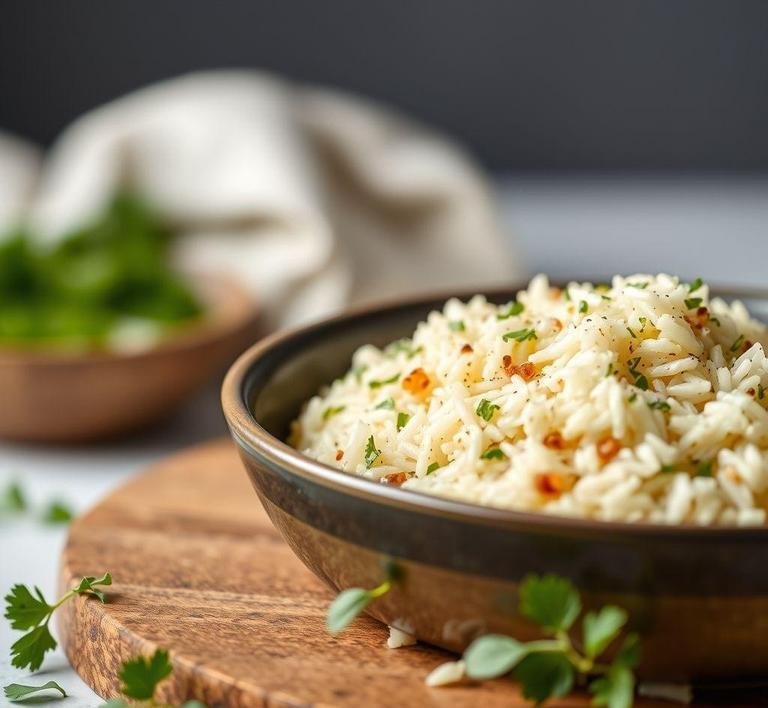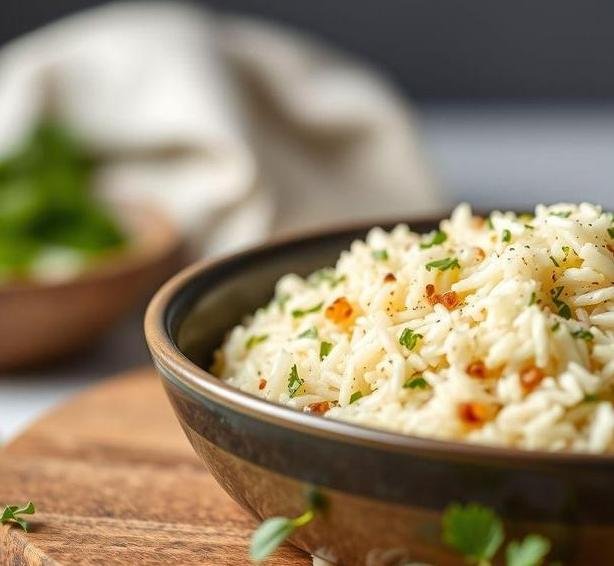Mary Berry, the beloved British culinary icon known for her reliable, approachable, and delicious recipes, brings a unique twist to Persian rice-a dish steeped in centuries of tradition and bursting with fragrant spices. Persian rice, or “chelo”, is more than just a side dish; it’s a culinary art form that centers around creating perfectly fluffy grains with a golden, crispy crust called “tahdig”.
Mary’s rendition of Persian rice captures this essence with a blend of simple yet thoughtfully chosen ingredients and techniques. Unlike everyday rice, Persian rice is celebrated for its texture contrast-the fluffy, tender rice paired with the irresistible, crunchy bottom layer that forms during cooking. This is often the hallmark of a well-made Persian rice.
In Mary Berry’s take, the dish is elevated with subtle aromatics like saffron, turmeric, or even cardamom, lending the rice a vibrant color and intoxicating scent. The dish is a harmonious balance of technique, flavor, and visual appeal-perfect as a centerpiece or accompaniment to Persian stews like ghormeh sabzi or fesenjan, or even grilled meats.
In essence, Mary Berry’s Persian rice is a gateway to exploring Persian culinary culture with a familiar, accessible touch-making it ideal for home cooks eager to experience global flavors without intimidation.
Mary Berry’s Persian Rice Recipe
Ingredients Needed

To create Mary Berry’s Persian Rice, the ingredient list is straightforward yet powerful in its ability to deliver that signature aromatic flavor and fluffy texture:
- Basmati rice (typically long-grain, prized for its fragrance and fluffiness) – about 2 cups
- Water – for soaking and cooking, usually 4 cups or more, depending on method
- Salt – to taste, usually 1-2 teaspoons
- Butter or oil (vegetable oil, or for authenticity, clarified butter or ghee) – around 3 tablespoons
- Saffron threads – a small pinch, soaked in warm water to release color and flavor
- Turmeric powder – optional, for a warm golden hue and subtle earthiness
- Onion – finely chopped or thinly sliced (optional, depending on Mary’s exact version)
- Yogurt or mashed potato (optional, sometimes used to help create the tahdig crust)
- Water or broth – for cooking the rice to add flavor depth
Optional garnishes might include toasted nuts (like slivered almonds or pistachios), dried barberries (zereshk), or fresh herbs to finish the dish and add contrast in texture and taste.
Equipment Needed
Making Mary Berry’s Persian Rice isn’t just about ingredients-the right equipment plays a crucial role in achieving the perfect texture and that coveted golden crust. Here’s what you’ll need:
- A heavy-bottomed, non-stick saucepan or pot with a tight-fitting lid: This ensures even heat distribution and traps steam, which is essential for fluffy rice and crisp tahdig.
- Fine mesh sieve or colander: For rinsing the rice to wash away excess starch.
- Measuring cups and spoons: For precise ratios.
- A small bowl or cup: To soak and bloom the saffron threads.
- Wooden spoon or spatula: For fluffing the rice without breaking the grains.
- Kitchen towel or cloth (optional but recommended): Often, a towel is placed under the lid to absorb condensation, preventing excess moisture from dripping back into the rice.
- Stove or portable burner: Control over heat is key-starting with high heat and then reducing to low for gentle steaming.
If you’re incorporating mashed potato or yogurt for tahdig, a mixing bowl and fork might come in handy.
Instructions To Make Mary Berry’s Persian Rice
Let’s walk through the steps with the care and precision that Mary Berry’s recipes are known for, highlighting the nuances that make this dish exceptional:
- Rinse and soak the rice: Start by rinsing 2 cups of basmati rice under cold water, swirling gently until the water runs clear. This removes surface starch, preventing clumping. Then, soak the rice in cold water with a pinch of salt for at least 30 minutes (up to 2 hours). Soaking softens the grains and ensures even cooking.
- Prepare saffron: While the rice soaks, take a pinch of saffron threads and crush them lightly between your fingers or a mortar and pestle. Soak them in 2 tablespoons of warm water to bloom the color and release flavor.
- Parboil the rice: Bring a large pot of salted water to a rolling boil. Drain the soaked rice and add it to the boiling water. Cook for about 5-7 minutes until the rice is just tender but still firm in the center (al dente). Drain the rice thoroughly using a sieve.
- Prepare the pot for tahdig: In your heavy-bottomed saucepan, heat 3 tablespoons of butter or oil over medium heat. For an authentic touch, you can mix a bit of turmeric or saffron water into the oil for color. If using yogurt or mashed potato for tahdig, spread a thin layer on the bottom now.
- Layer the rice: Carefully spoon the parboiled rice into the pot, mounding it slightly. Using the back of a spoon, shape the rice into a dome and create several holes in the mound to allow steam to escape.
- Steam the rice: Cover the pot with a clean kitchen towel, then place the lid tightly on top. This prevents moisture from dripping back into the rice. Cook over low heat for 30-40 minutes. The low heat allows the rice to steam gently and the tahdig crust to form undisturbed.
- Check and serve: After cooking, gently invert the pot onto a large serving plate so the golden tahdig is on top, or serve rice in one bowl and scrape the crispy bottom separately.
- Finish with saffron: Drizzle the saffron water over the rice just before serving, letting its color streak through the fluffy grains, adding that unmistakable aroma and depth.
Tips And Tricks
Mastering Mary Berry’s Persian Rice involves some insider knowledge that can elevate your dish from good to spectacular:
- Rinse thoroughly and soak: This step is crucial. Rinsing washes off excess starch, and soaking allows the rice grains to elongate during cooking.
- Don’t rush the parboil: Keep the rice firm in the center before draining. Overcooking will make the grains mushy.
- Low and slow steaming: After adding the rice to the pot, the key to perfect fluffiness and tahdig is gentle, slow cooking on low heat. Too high heat will burn the crust; too low and the rice won’t cook evenly.
- Use a heavy-bottomed pot: This helps distribute heat evenly, preventing hot spots that could burn the tahdig.
- Kitchen towel under the lid: This traditional trick absorbs condensation, keeping the rice dry and fluffy rather than soggy.
- Experiment with tahdig bases: Traditional tahdig is made with thinly sliced potatoes or bread, but yogurt or plain rice works beautifully. You can even try adding a little grated cheese for a different twist.
- Saffron blooming: Bloom saffron in warm water rather than adding dry threads directly. This releases maximum color and flavor.
- Rest before serving: Let the rice rest for 5 minutes off the heat after cooking. This helps the grains firm up and makes serving easier.
Mary Berry’s Persian Rice is a sublime example of how simple ingredients and careful technique come together to create a dish that is both elegant and comforting. It offers a sensory experience-from the intoxicating scent of saffron to the delightful contrast between fluffy rice and crispy tahdig-that transports you to the rich culinary heritage of Persia.
Whether you are a seasoned cook or a curious beginner, this recipe invites you to savor the magic of layering flavors and textures in every grain of rice. It’s perfect for special occasions or as a stunning accompaniment to your favorite Middle Eastern dishes. With a little patience and love, you’ll master this iconic dish and impress your friends and family with your culinary prowess.
So, grab your basmati, prep your saffron, and get ready to create a pot of rice that’s more than just a side dish-it’s a celebration of culture, tradition, and pure deliciousness.
Easy Recipe Variations For Mary Berry’s Persian Rice

Mary Berry’s Persian Rice is already a gem-rich, fragrant, and subtly spiced with that perfect balance of flavors. But like any great recipe, it’s a versatile canvas waiting for your personal touch. Let’s explore some delightful variations that are simple to execute yet transform the dish beautifully.
1. Nutty and Fruity Twist:
One of the most beloved aspects of Persian rice dishes is the interplay of textures and tastes, particularly the sweet crunch of nuts and the tang of dried fruits. After cooking Mary Berry’s Persian Rice, gently fold in toasted slivered almonds or pistachios for a nutty crunch. For an added burst of sweetness, toss in golden raisins or chopped dried apricots. These additions elevate the dish from a simple side to a vibrant centerpiece with a delightful mosaic of flavors and textures.
2. Saffron Infusion:
Saffron is the star spice of Persian cuisine and can take this rice from lovely to utterly luxurious. If you want to add a little opulence, soak a pinch of saffron threads in warm water or milk for about 10 minutes and stir this golden infusion into the rice just before serving. The delicate floral aroma and rich golden hue will give your rice that unmistakable Persian elegance.
3. Herbaceous Freshness:
While Mary’s version is subtly spiced, adding fresh herbs can brighten the dish wonderfully. Mix in finely chopped fresh parsley, mint, or dill right before serving. The fresh herbs add a vibrant green pop and a refreshing flavor that contrasts beautifully with the warm spices.
4. Vegetable Boost:
For a heartier, more wholesome meal, add sautéed vegetables such as diced carrots, peas, or roasted eggplant. These can be stirred into the rice once cooked, adding color, nutrients, and a deliciously homey feel. If you like, gently caramelize some onions or garlic before mixing them in for an extra layer of savory goodness.
5. The Tahdig Effect:
A signature of Persian rice is the crispy golden crust known as tahdig. You can recreate this at home by cooking the rice on a low heat with a drizzle of oil or melted butter at the bottom of the pot, allowing a golden crust to form. It adds a wonderful crunchy contrast that’s utterly addictive and totally worth the wait.
Each of these variations takes Mary Berry’s recipe as a base and lets you make the dish uniquely yours, whether you prefer it nutty, floral, fresh, or crispy. The beauty of this recipe is how effortlessly it adapts to your pantry and palate.
Storing Leftovers
Leftover rice is a kitchen staple and knowing how to store it properly can make all the difference in preserving its texture and flavor for your next meal.
Cooling Down:
Once the rice has finished cooking, allow it to cool slightly at room temperature-but no longer than 1 hour to avoid bacteria growth. Spread it out on a clean tray or plate to speed up the cooling process and prevent clumping.
Refrigeration:
Transfer the cooled rice to an airtight container and place it in the refrigerator. Stored this way, it will remain fresh for up to 3-4 days. The airtight seal keeps the rice moist while preventing it from absorbing any unwanted fridge odors.
Freezing for Longer Storage:
If you want to keep your Persian Rice longer, freezing is a great option. Portion the rice into freezer-safe containers or heavy-duty freezer bags. Press out as much air as possible to avoid freezer burn, label with the date, and freeze for up to one month. When ready to use, thaw overnight in the refrigerator.
Reheating Tips:
Reheating rice properly is crucial to retain its delicate texture. The best method is to sprinkle a few drops of water over the rice, cover it with a damp paper towel or lid, and microwave on medium heat in short bursts, fluffing between intervals. Alternatively, gently reheat on the stovetop with a splash of water or broth in a covered pan, stirring occasionally to prevent sticking. This method revives the grains, making them fluffy rather than clumpy or dry.
By taking care of your leftovers with these storage and reheating tips, you can enjoy the fragrant allure of Mary Berry’s Persian Rice time and time again-without losing that fresh-cooked charm.
What To Eat With Mary Berry’s Persian Rice?
Mary Berry’s Persian Rice, with its aromatic spices and subtle flavors, pairs beautifully with a wide array of dishes, making it an incredibly versatile accompaniment.
1. Grilled or Roasted Meats:
Persian cuisine often features tender, marinated meats, so think grilled chicken kebabs, lamb chops, or spiced beef koftas. The rice’s mild warmth complements the rich, savory flavors of the meat, creating a perfect harmony on the plate. For a British twist inspired by Mary Berry’s style, you could also serve it alongside a juicy roast chicken with herbs.
2. Slow-Cooked Stews and Tagines:
A fragrant Persian or Middle Eastern stew, simmered with spices, tomatoes, and tender meat or vegetables, pairs wonderfully with this rice. The rice acts as a gentle base that soaks up the rich sauces-think lamb with dried fruits, or a vibrant vegetable tagine with chickpeas and spices.
3. Fresh and Tangy Salads:
Light, crisp salads provide a refreshing contrast. A simple cucumber and mint salad with a lemony dressing, or a tomato and onion salad with sumac, will balance the warmth of the rice beautifully. Adding a dollop of yogurt or tzatziki on the side can also bring a creamy, cooling element.
4. Vegetarian and Vegan Options:
For a plant-based meal, Mary Berry’s Persian Rice pairs exceptionally well with roasted vegetables like aubergine, courgette, or peppers. You could also serve it with spiced lentils or a chickpea stew flavored with cumin and coriander for a wholesome, satisfying meal.
5. Dips and Condiments:
Consider serving alongside flavorful dips such as hummus, baba ganoush, or a zesty pomegranate molasses sauce. These add layers of flavor and texture that elevate the meal beyond just rice and protein.
The beauty of this rice is its ability to act as a gentle flavor carrier, enhancing and complementing whatever you serve with it-whether it’s a simple weeknight dinner or an elegant feast.
Conclusion
Mary Berry’s Persian Rice is much more than just a side dish-it’s a fragrant, adaptable, and comforting experience that brings a touch of Persian culinary magic to your table. From its elegant simplicity to the rich potential for creative variations, this rice embodies the best of both worlds: easy to make, yet impressively versatile and flavorful.
By experimenting with nuts, herbs, saffron, or a crispy tahdig crust, you can personalize this classic recipe and make it truly your own. And thanks to proper storage and reheating methods, leftovers can be just as delicious the next day, making it a practical choice for busy cooks.
Paired with grilled meats, stews, fresh salads, or hearty vegetarian dishes, Mary Berry’s Persian Rice offers a world of flavor possibilities, perfectly suited to any occasion. So whether you’re looking to expand your culinary repertoire or simply enjoy a delicious, fragrant rice dish, this recipe is a fantastic place to start.
Dive in, experiment, and savor every aromatic, fluffy bite-you might just discover your new favorite rice dish.
FAQs
What Are The Key Ingredients In Mary Berry’s Persian Rice Recipe?
Mary Berry’s Persian rice recipe typically includes basmati rice, saffron, butter, and a variety of aromatic ingredients like cinnamon, cardamom, and dried fruits (such as barberries or raisins). Some versions also feature almonds or pistachios for added texture and flavor. The combination of these ingredients gives the rice its distinct, fragrant taste and vibrant color.
How Do You Achieve The Crispy Crust (tahdig) In Mary Berry’s Persian Rice Recipe?
To create the crispy crust, or ‘tahdig’, Mary Berry suggests layering the bottom of the pot with a mixture of rice and a little butter or oil before cooking. Once the rice is added, the lid is tightly sealed, and the rice is cooked on low heat for a longer period. The heat causes the bottom layer of rice to crisp up, creating the signature golden crust. It’s essential to avoid stirring the rice after it’s added to the pot to ensure the crust forms properly.
Can I Make Mary Berry’s Persian Rice Recipe Ahead Of Time?
Yes, you can prepare Mary Berry’s Persian rice ahead of time. You can cook the rice and store it in the refrigerator for up to a day before serving. When you’re ready to serve, gently reheat the rice on the stovetop with a little extra butter or oil to refresh its flavor and texture. To preserve the crispy tahdig, you can reheat the rice in the same pot, covering it with a lid to help retain moisture and re-crisp the bottom layer.


